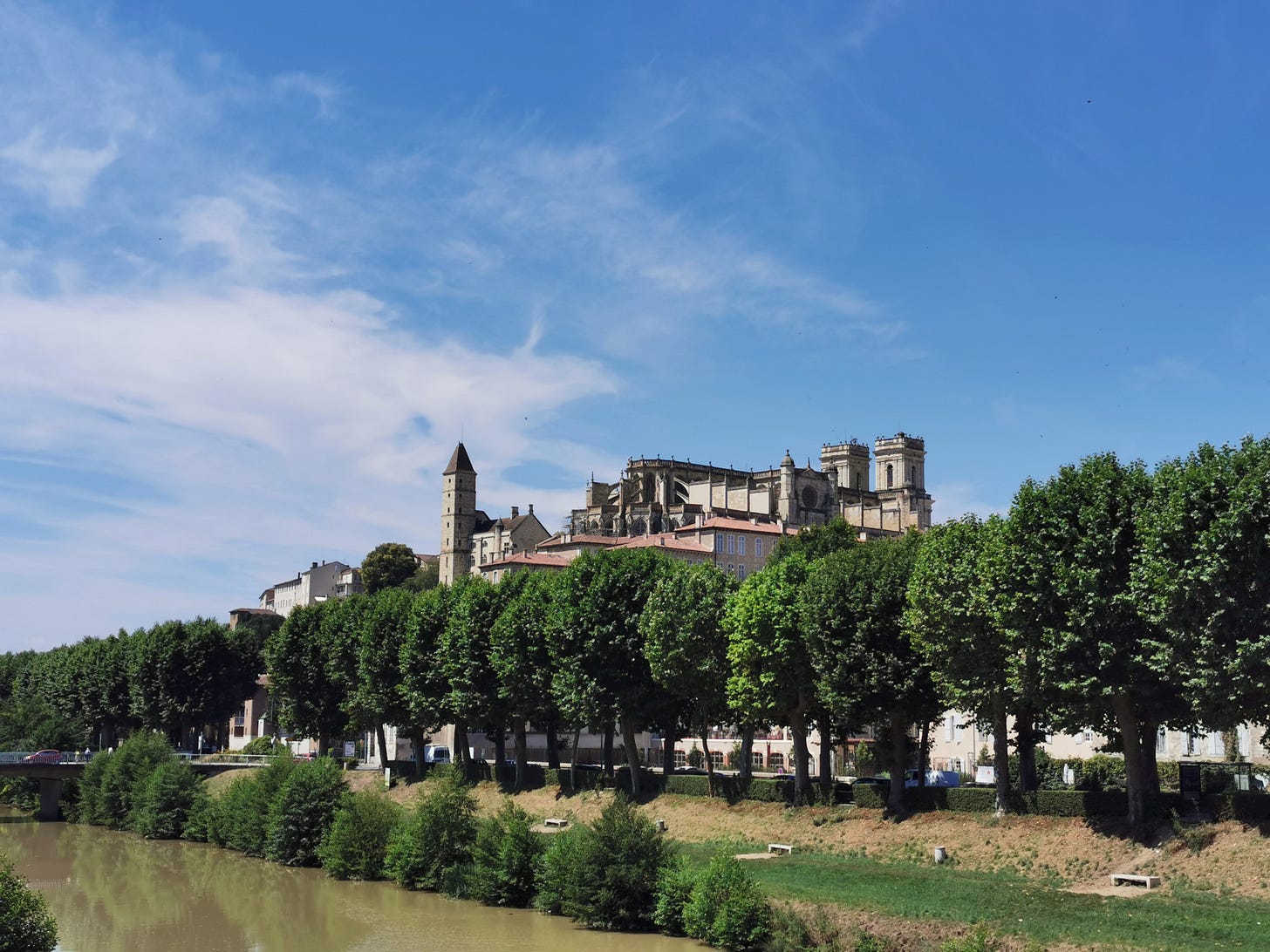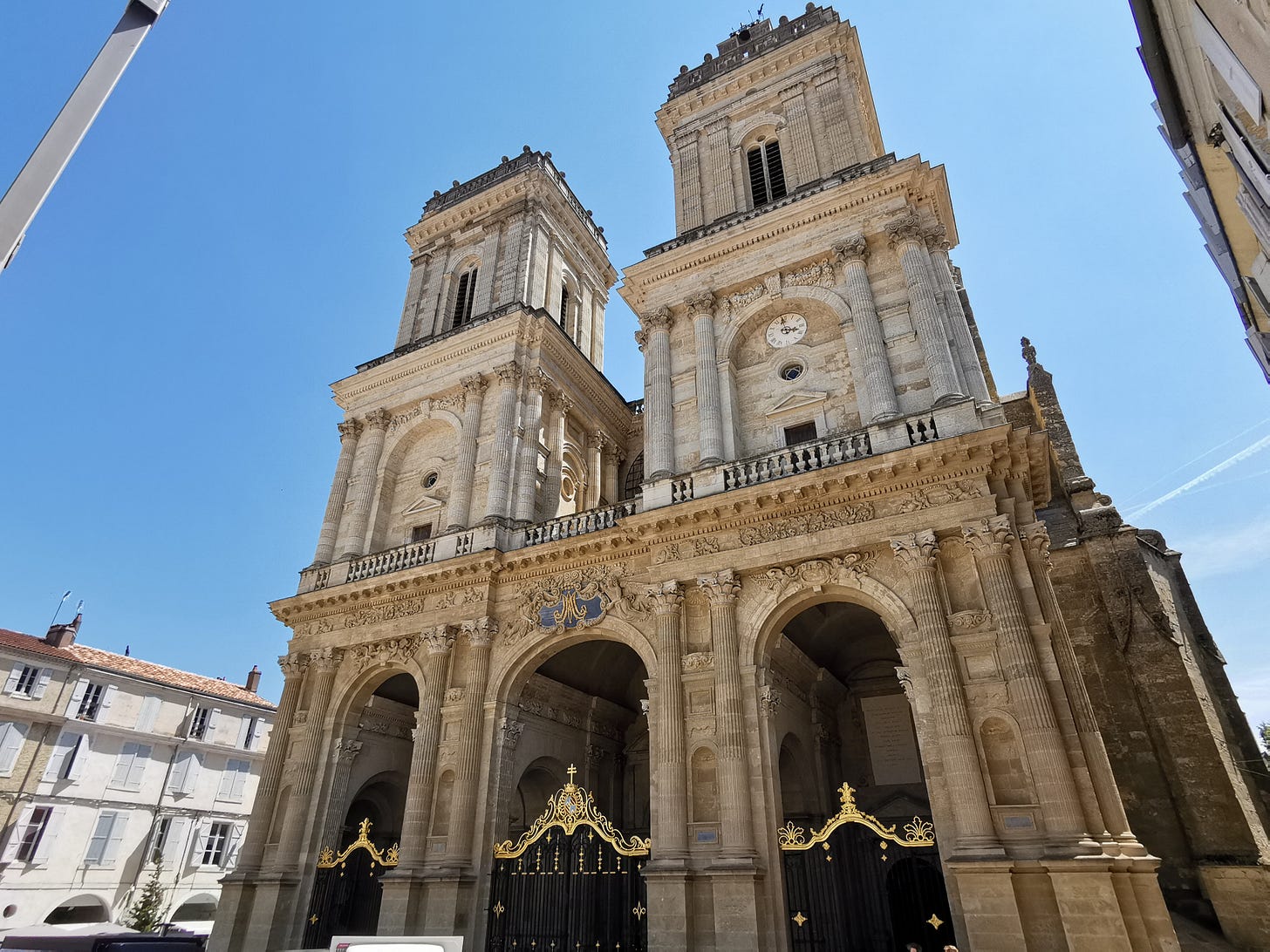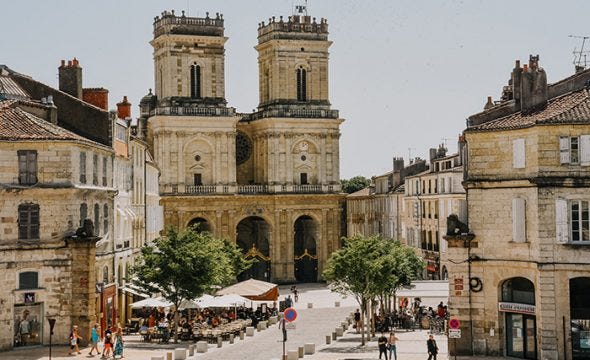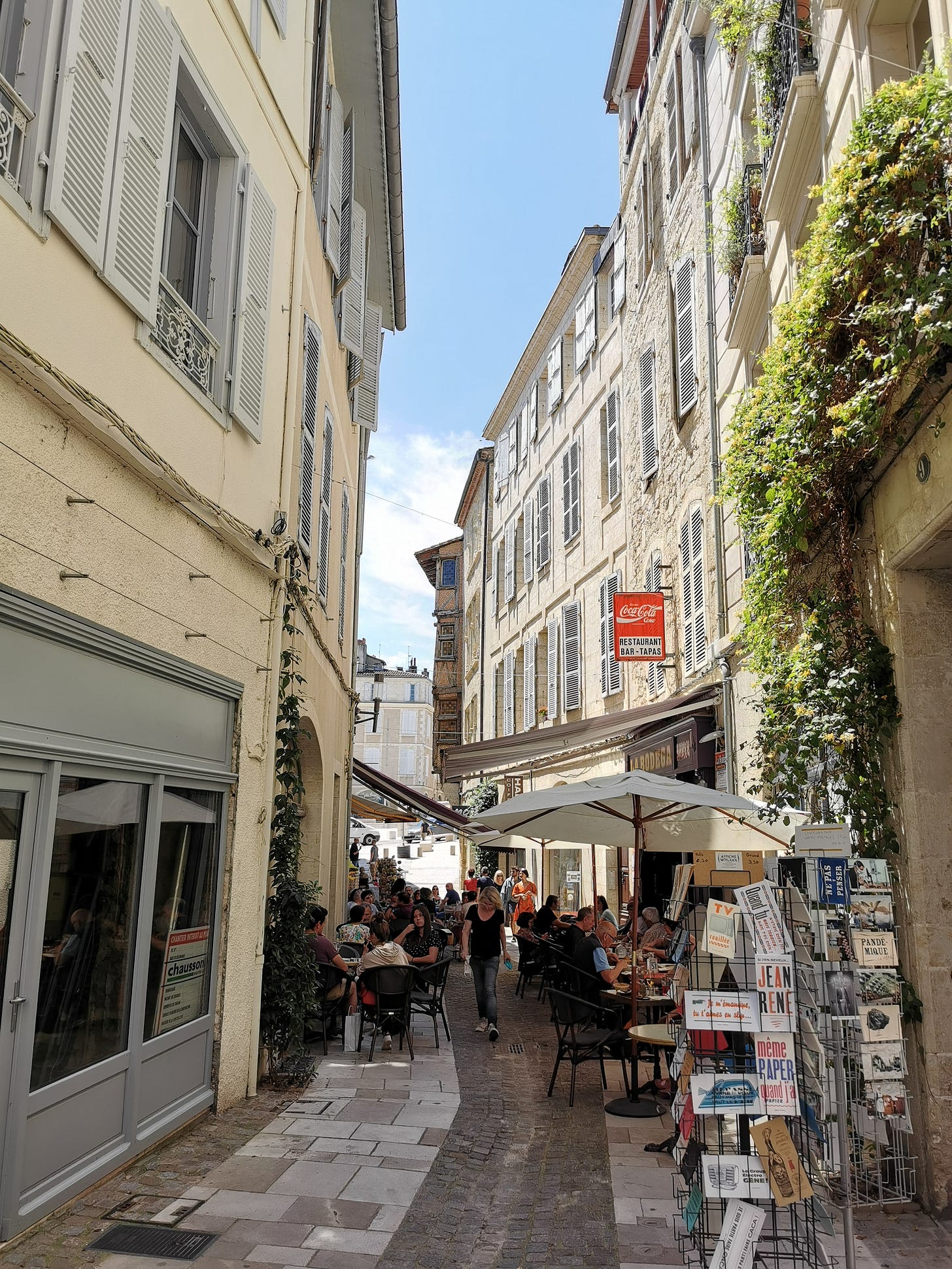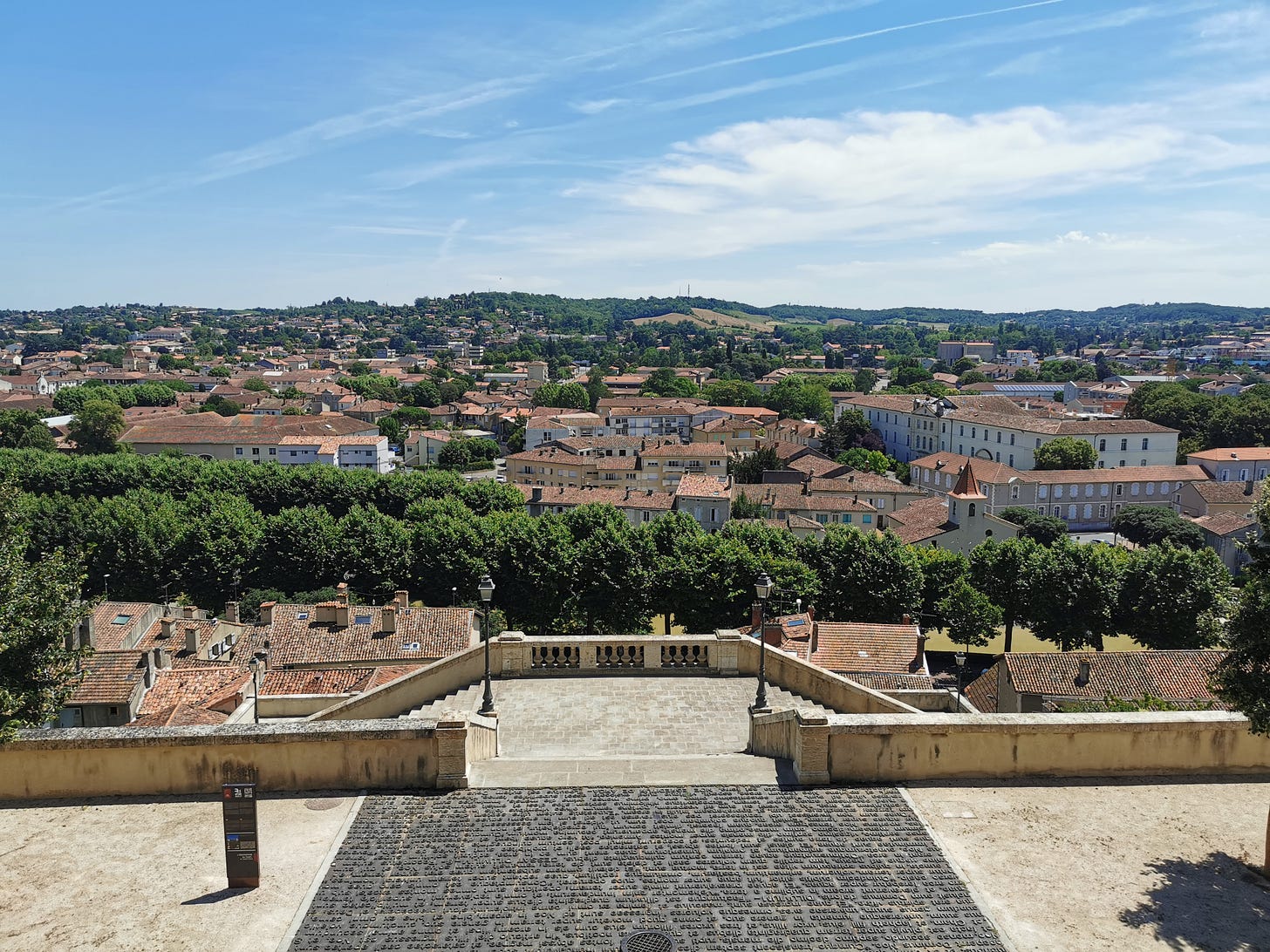Auch is the unofficial capital of Gascony, located in the heart of the Gers Department in the Occitanie region. Auch was once home to Henri IV before he became King of France. Today, it offers the perfect place to discover the rich Gascogne cuisine and begin exploring the area’s Armagnac industry.
The town, population of around 24,000, is about 1 hour west of Toulouse, accessible by a local TER train. On a crisp weekend morning, I traveled by train with my bike to Auch and then spent the day exploring the hilltop town on two wheels.
The city center is dominated by the Cathédrale Sainte-Marie which overlooks a plaza lined with restaurants. Construction began in 1489 on the site of the former Romanesque cathedral and the cathedral was completed in 1680. Its façade combines different architectural styles (Gothic, Renaissance, and Classical.
On this Saturday morning, the plaza was humming with a farmer’s market as people shopped and then settled onto one of the terraces for such delicacies as foie gras, magret de canard, and just about anything you can imagine cooked in duck fat.
Alternately walking and riding, I wandered the narrow streets sampling local products.
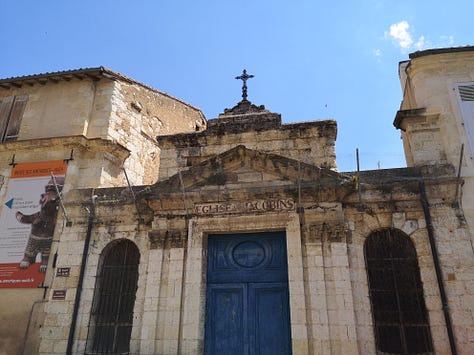

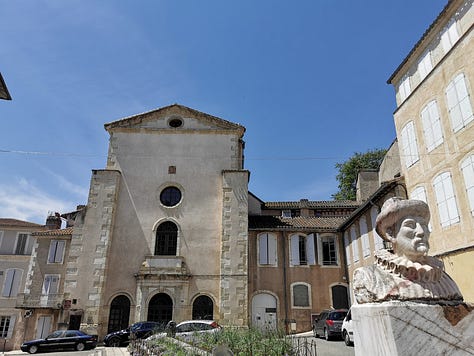

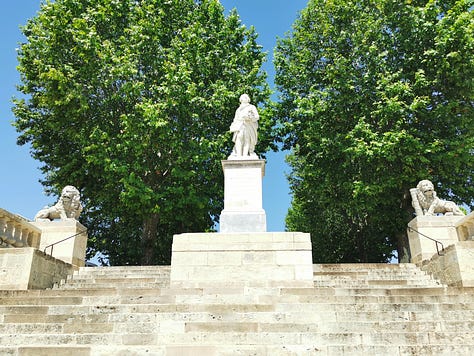

One of the “can’t miss” features of Auch are the Auscitaines pousterles. These are steep stairways that lead from the upper, historic city center, to the lower city along the Gers River.
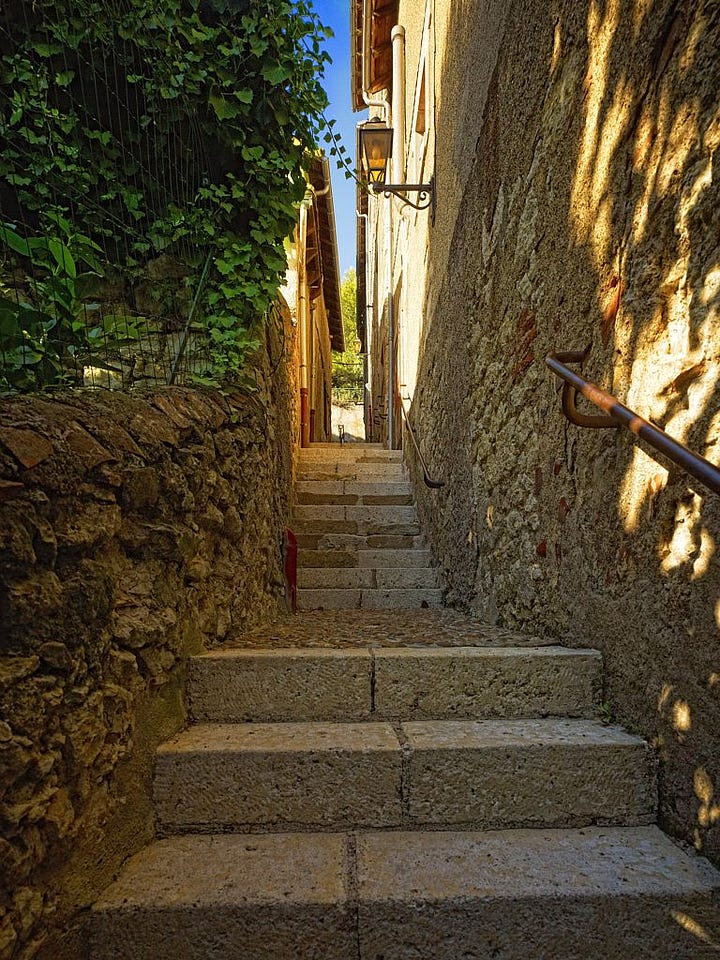

Instead of the Auscitaines pousterles, I carried my bike down the monumental staircase that offers a sweeping view of the lower city. And of course, it includes a statue of that favorite Gascon hero, D'Artagnan.
History
Augusta Auscorum fused the cultures of the Aquitanian people who settled on the banks of the Gers River and the Roman culture that arrived following Julius Caesar's conquest. Following the collapse of the Roman Empire, the town and the whole region came under the control of the Visigoths.
Auch really began to develop in the 16th century, when the king’s representative began to transform it. Major works launched under the Second Empire in the 19th century gave the city its modern appearance.
Exploring
Keep reading with a 7-day free trial
Subscribe to French Crossroads to keep reading this post and get 7 days of free access to the full post archives.


